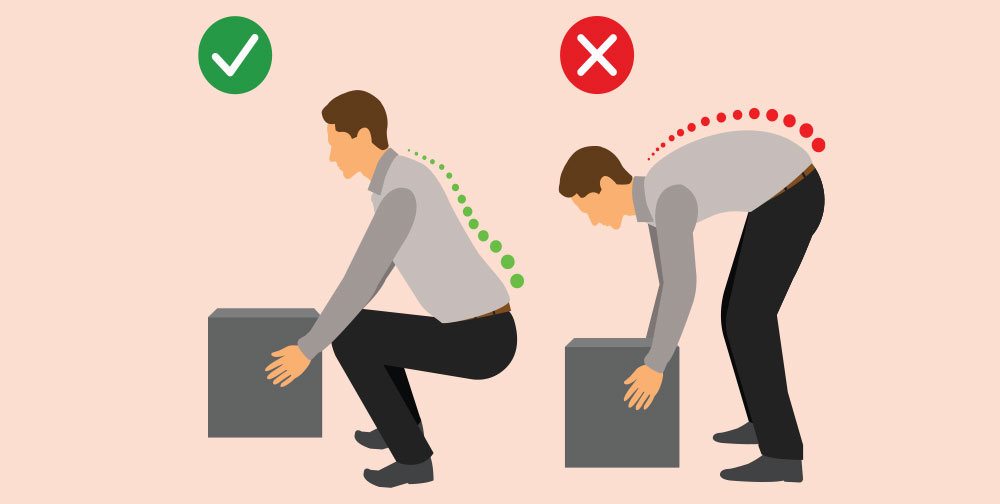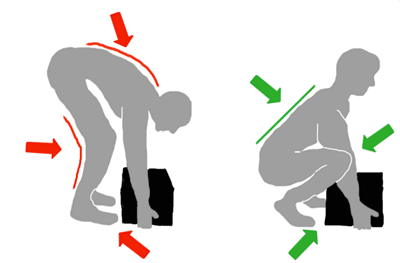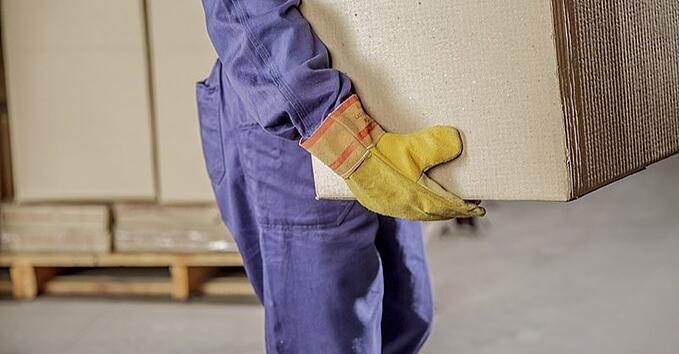Table of Contents


Tamara Walcott, a female American powerlifter, surprised the world in 2022 by lifting 1620.4 lbs/737.5 kg in 2022, making a Guinness Worlds Record. So how did she do it? that’s the weight of an adult giraffe. Powerlifters undergo vigorous training; a part of that training is a proper lifting technique, so they don’t end up injuring themselves. Because we are not powerlifters and are not trained to move heavy items, we have a higher risk of injury when lifting something heavy. Often these incidents result in sudden injuries, which can be as minor as a tense muscle or as serious as a ruptured one. Wrong lifting techniques may result in several types of injuries and can weaken your muscles. Some of these injuries include:
- Muscular Spasms and Strains
- Spinal Cord Misalignment and Injuries
- Permanent Damage to Spinal Cord
- Tendinitis
- Elbow and Arm Injuries
- Knee Damage
- Myofascia
- Nerve Damage
What is Kinetic Lifting?
A human body is capable of incredible things, if used properly. A healthy body can lift and tolerate weights much higher than its own, but the right technique has to be there. Lifting heavy things without using tools or machinery is known as kinetic lifting. This technique ensures that you do not injure yourself while lifting heavy items. Kinetic lifting techniques ensure maintaining the right posture while lifting so that your muscles and joints have to withstand the least possible pressure. These techniques also ensure proper momentum and manoeuvring as you have to lift heavy items and move with them. Your body will face all sorts of forces, including the weight of the object, rotational forces, and momentum. If your body is not used to handling these forces and you do not maintain a proper posture or movement, you are highly vulnerable to injuries.
Kinetic Lifting Methods and Techniques
Check the Item
Before you try to lift a heavy item, you need to analyse it. Some objects are easier to move than others with the same weight. For instance, it is much easier for two people two lift a rectangular box than an irregular shaped object of the same weight. You also need to know how many people are required for lifting a heavy object because you are not Tamara Walcot. One way to check if you can handle the object is to slide it from one side to the other. Try to lift the item from one corner to see. Call a friend or two if you believe it to be much heavier than you can handle. You also have to consider if the item is fragile, so you will have to be extra careful.


Useful Gear
Wearing the right clothes when moving heavy objects is also important. Loose clothes can make lifting difficult and they might get stuck on the way. Wearing slippers when lifting or wearing nothing on your feet can make you slip and also exert extra pressure on your feet. It is best to get ready for lifting heavy objects as if you are going for a workout. Wear fitted but stretchable clothes. Wear sneakers to reduce the pressure on your feet. You can also wear grips such as ankle or elbow supports/grips to reduce the stress on your joints. Non-slip gloves can help you get a good grip and prevent slipping. Heavy non-fragile items can also be dragged on the floor if you are sure they won’t get damaged or ruin your flooring.
Clear the Route
You should also ensure that the path from the picking point to where you want to keep the heavy object is clear. Any water or oil spills on your way can be extremely dangerous, so you need to clean them first. You should also consider the distance you have to cover, you might have to take a breather. If you have to climb upstairs, you may need an extra hand. Consider all these factors before trying to lift a heavy object.
Warm-up
Warming up and stretching before and after you lift heavy items can prevent injuries. When you have remained idle for long and you start a physically challenging task right away, your body is subjected to stress in an instant. This can result in strains and spasms. Stretching and warming up will heat up your body and bring your body into momentum, which will help prevent injuries. Do the same after you are done lifting all the heavy items to prevent any stress or tension in your body.
Get into Position
Stand in front of the object, keep your feet shoulders width apart and keep one of your foot slightly ahead of the other. Keep your neck and back aligned and squat down to lift instead of kneeling forward. If you kneel forward for lifting a heavy item, chances are that you will end up straining your back. A squatting position ensures that the weight of the object is evenly distributed all over your body, making it easier for you to lift it. Depending on the shape of the object, keep an underhand or overhand grip. Remember that an underhand grip always makes lifting easier. Keep yourself balanced. Overhand grip is recommended if your arm span is as broad as either side of the object.
Lift the Object
Keep the item stable and stand up straight from the squatting position. If the object you are lifting has edges, you can improve your grip by wearing gloves. Make sure that you do not make any abrupt movements. Keep the object close to your waist area. Maintain your body posture as straight as you can and start moving.
Slow and Steady
Depending on how heavy the object is, you should rely on taking small steps and move gradually. Dont make haste and dont make any sudden changes in your movement. If you have to climb up or down the stairs, you will have to adjust your body accordingly to equally dissipate the weight of the object. If you find your arms shaking or you feel like you are losing balance, take a break and put down the object. Remember that putting down a heavy object is as serious as lifting it up, so follow our instructions below to put down heavy objects.
Putting It Down
When you have reached your destination with the heavy object you are moving, it is time to put it down. You may be tempted to put the object down quickly but that again can result in injury. Kneeling forward with a sudden movement to put a heavy object down can pul your back muscles or hurt your spinal cord. It can be tempting to place your item back down quickly. Using the same approach as you lifted it is the most effective way to guarantee a smooth transition. Bend your knees and squat down with the item in front of you. Place it on the floor or surface with both hands until it is safely down. Remember to keep your back and neck straight throughout the movement. Get back up straight.
When It’s Too Much
Know when the weight of an object is too much for you, and if there are too many of them, it is best not to move them alone. Professional movers have the experience, tools, and knowledge required to move heavy objects without breaking them or getting injured. Not all heavy items in a home or office will be the same. Some might look small but will be heavy. Some may have an irregular shape, making it difficult to get a good grip. You might not be physically fit to lift any heavy items, and such an attempt may result in an injury. However, professional movers can perform heavy lifting manually and also have specialised tools which help them in performing such challenging tasks. Look for professional movers in your vicinity who offer specialised services such as packing and moving fragile items, heavy items, and special items like pianos and aquariums.

